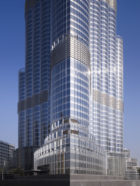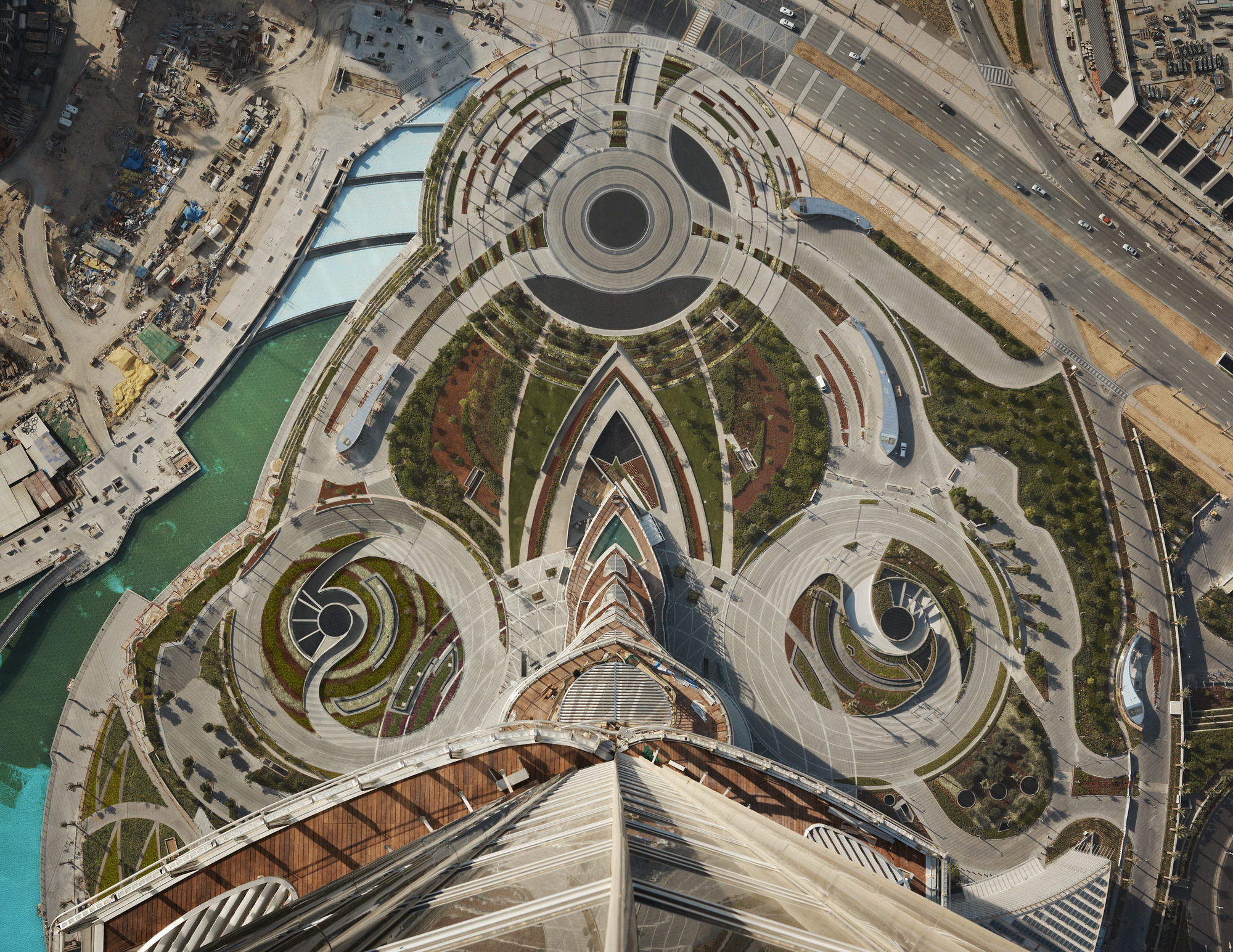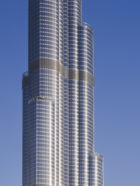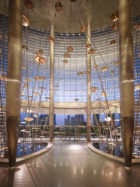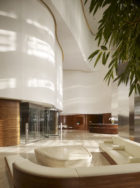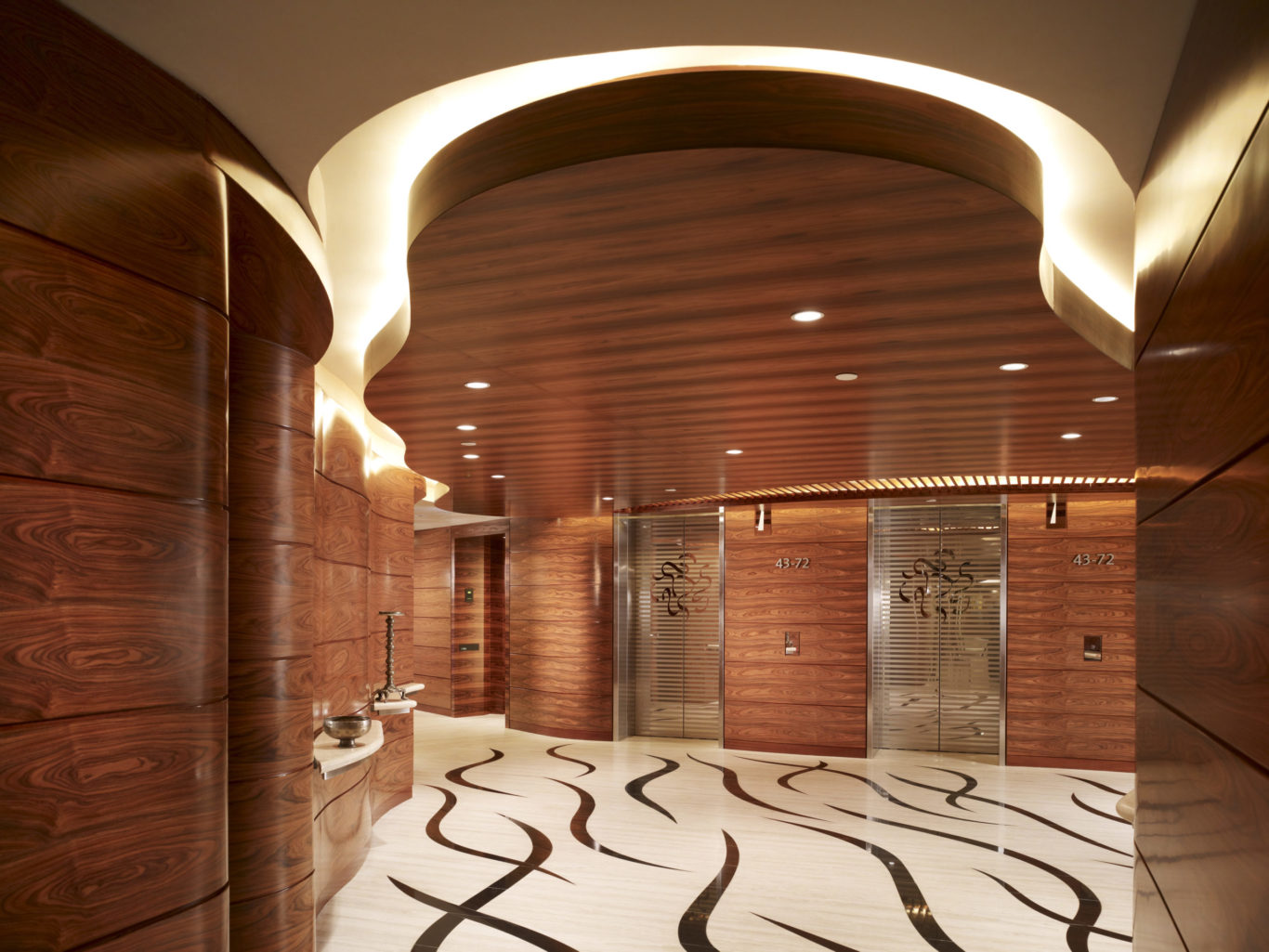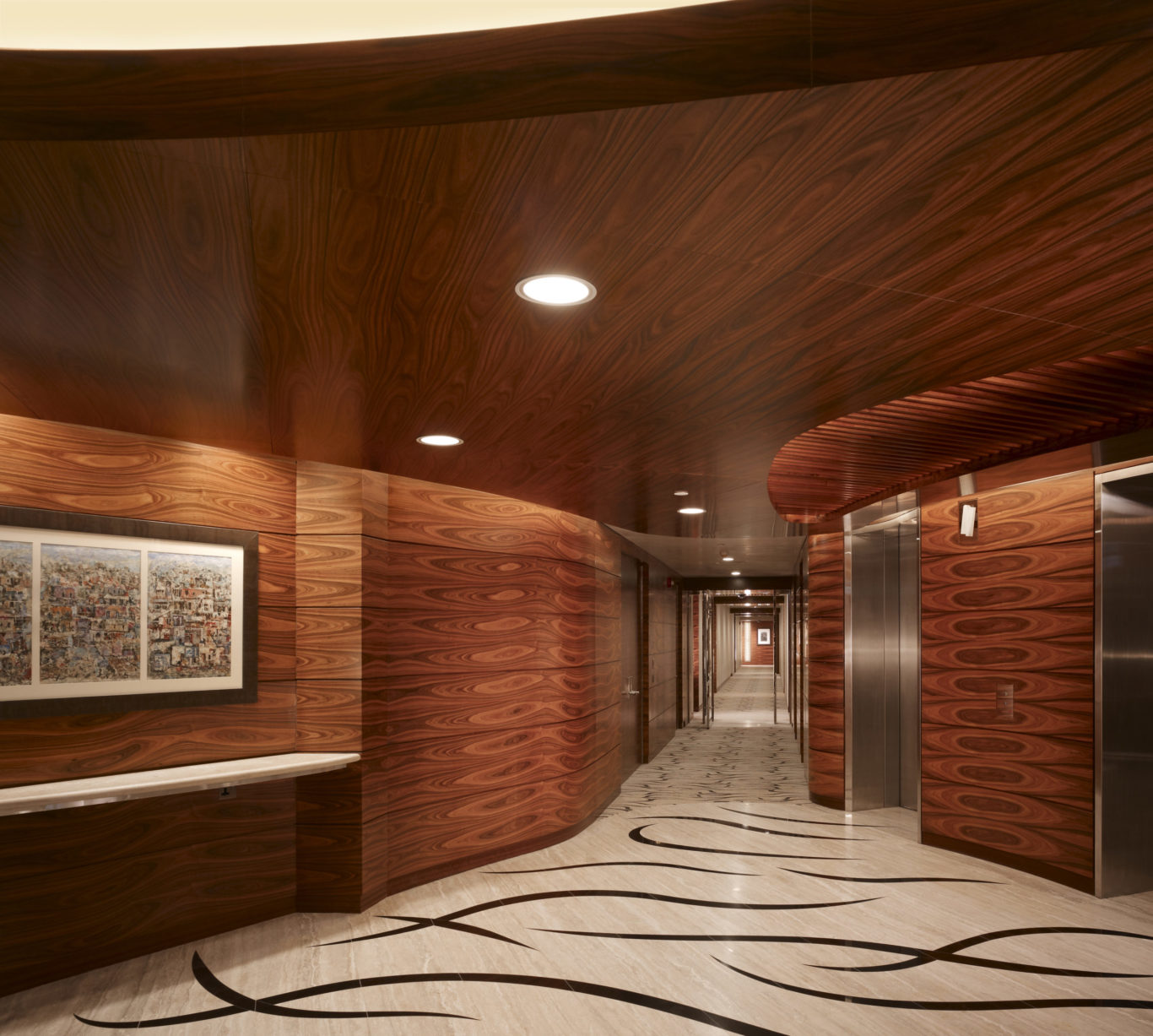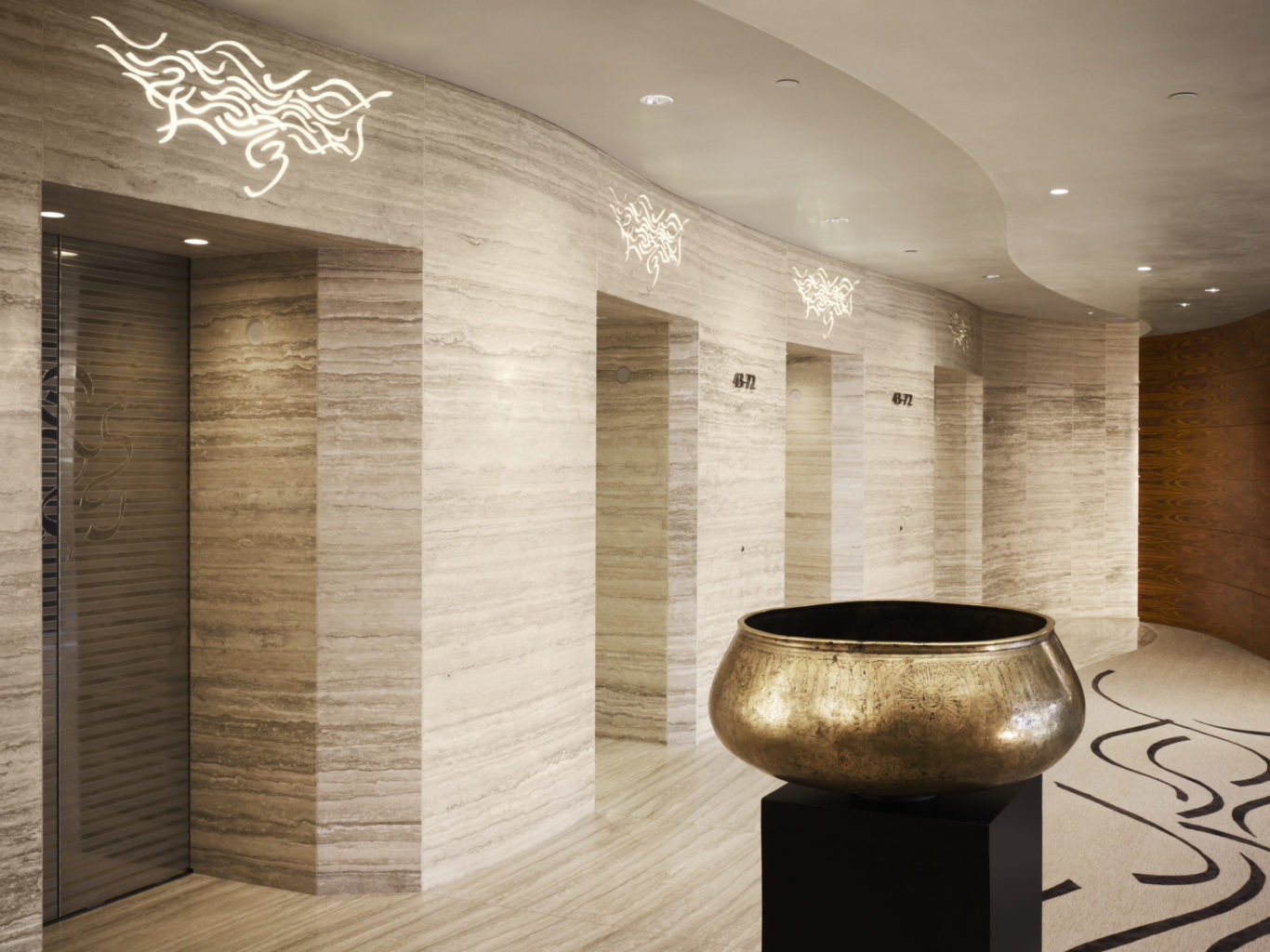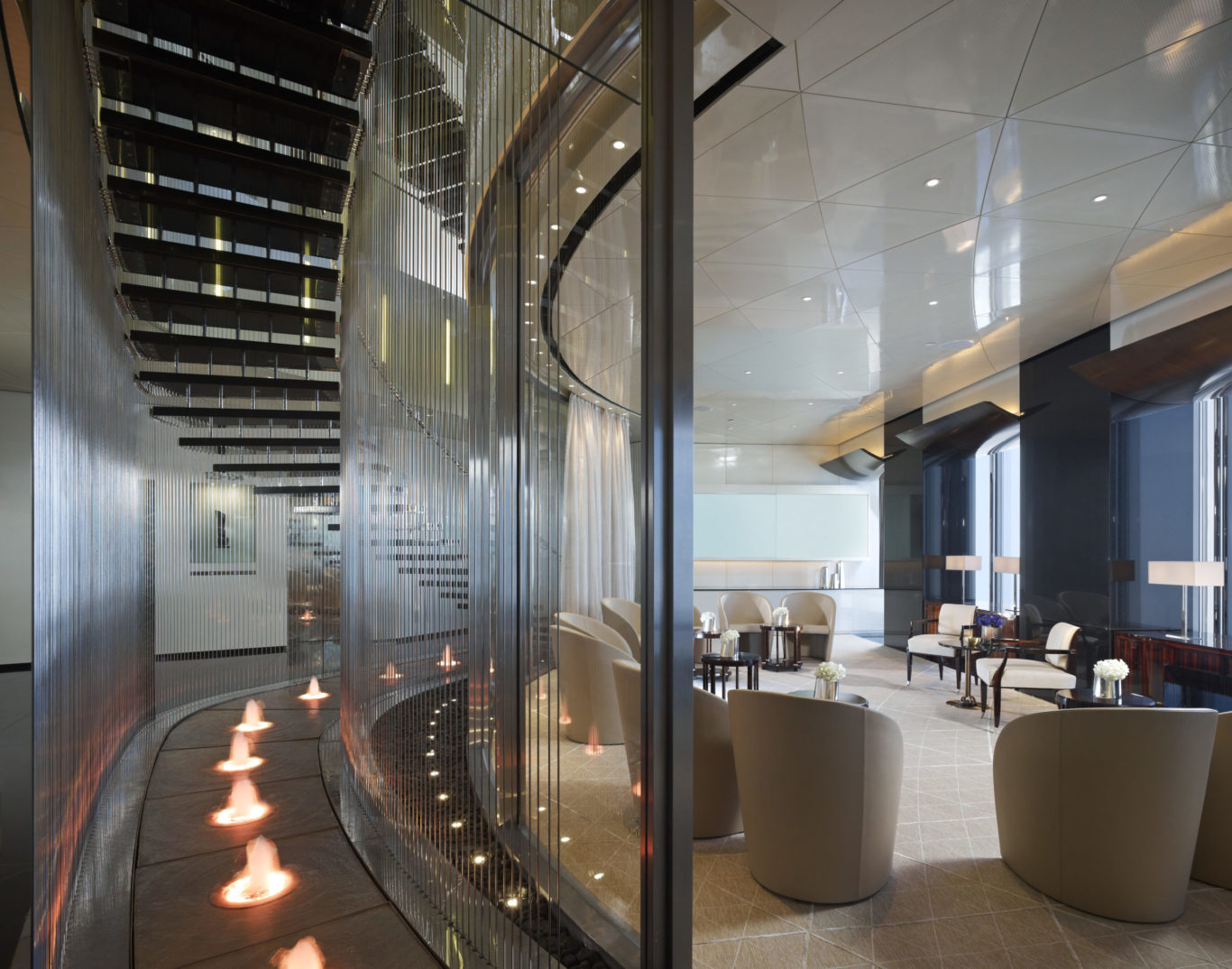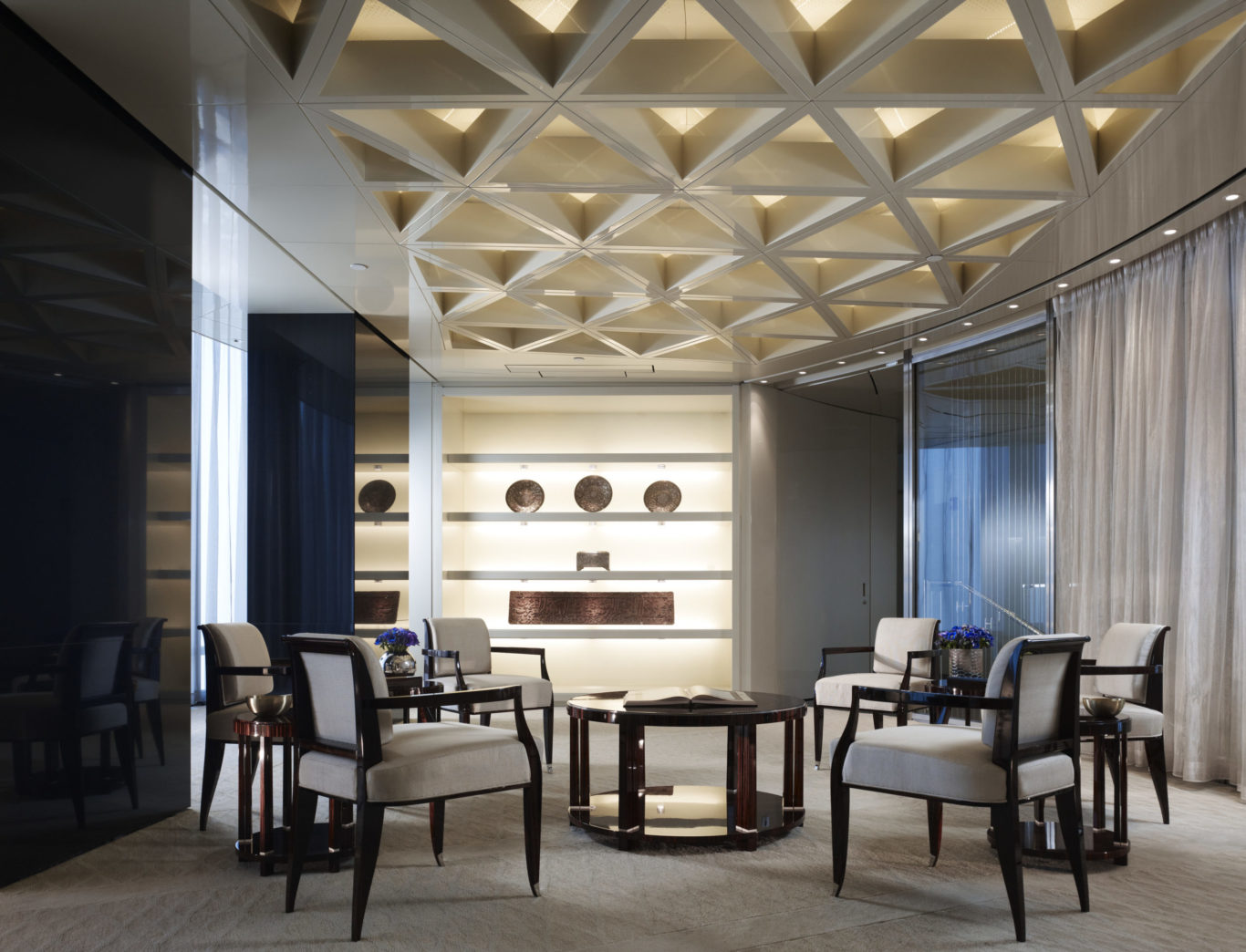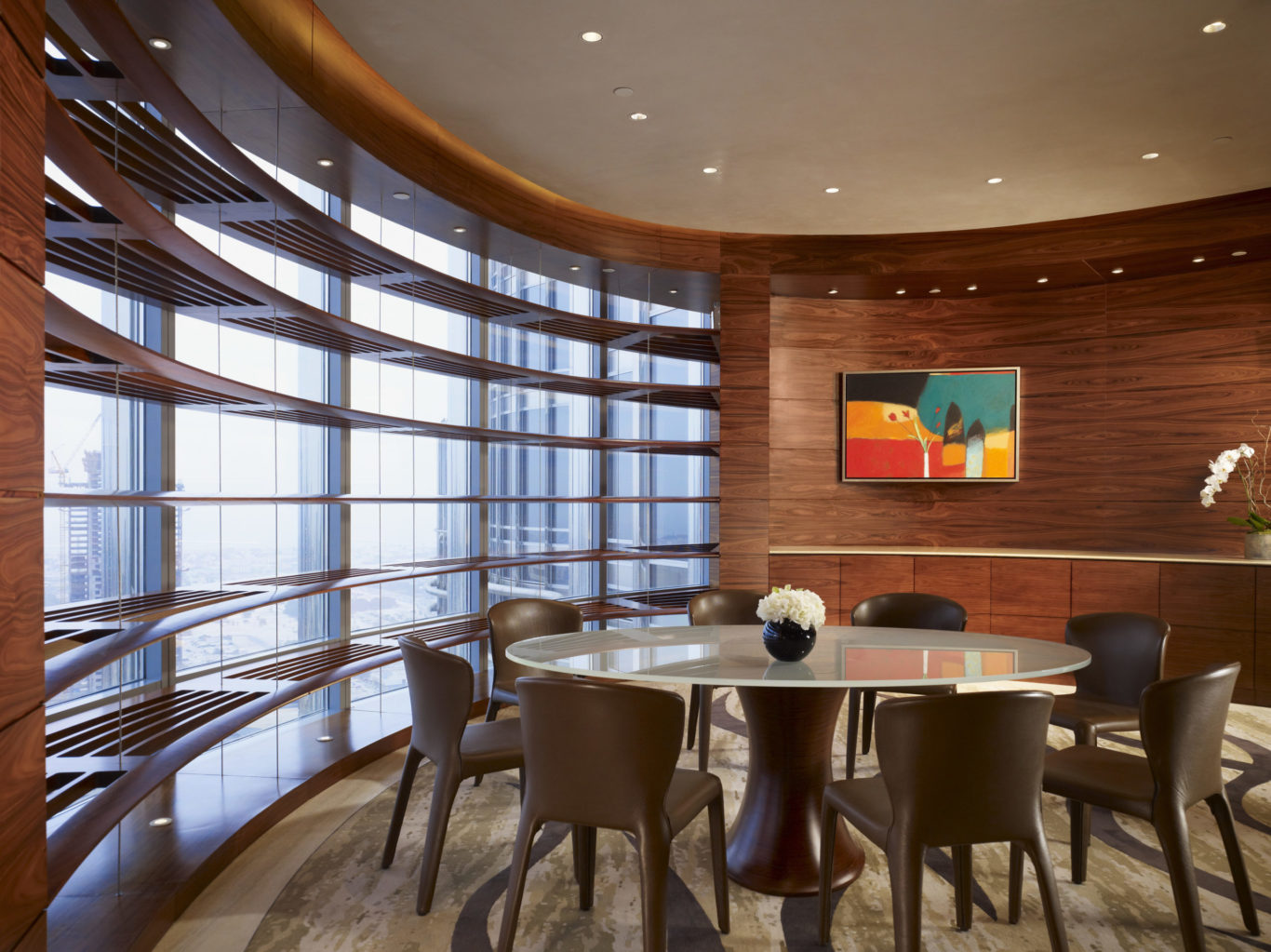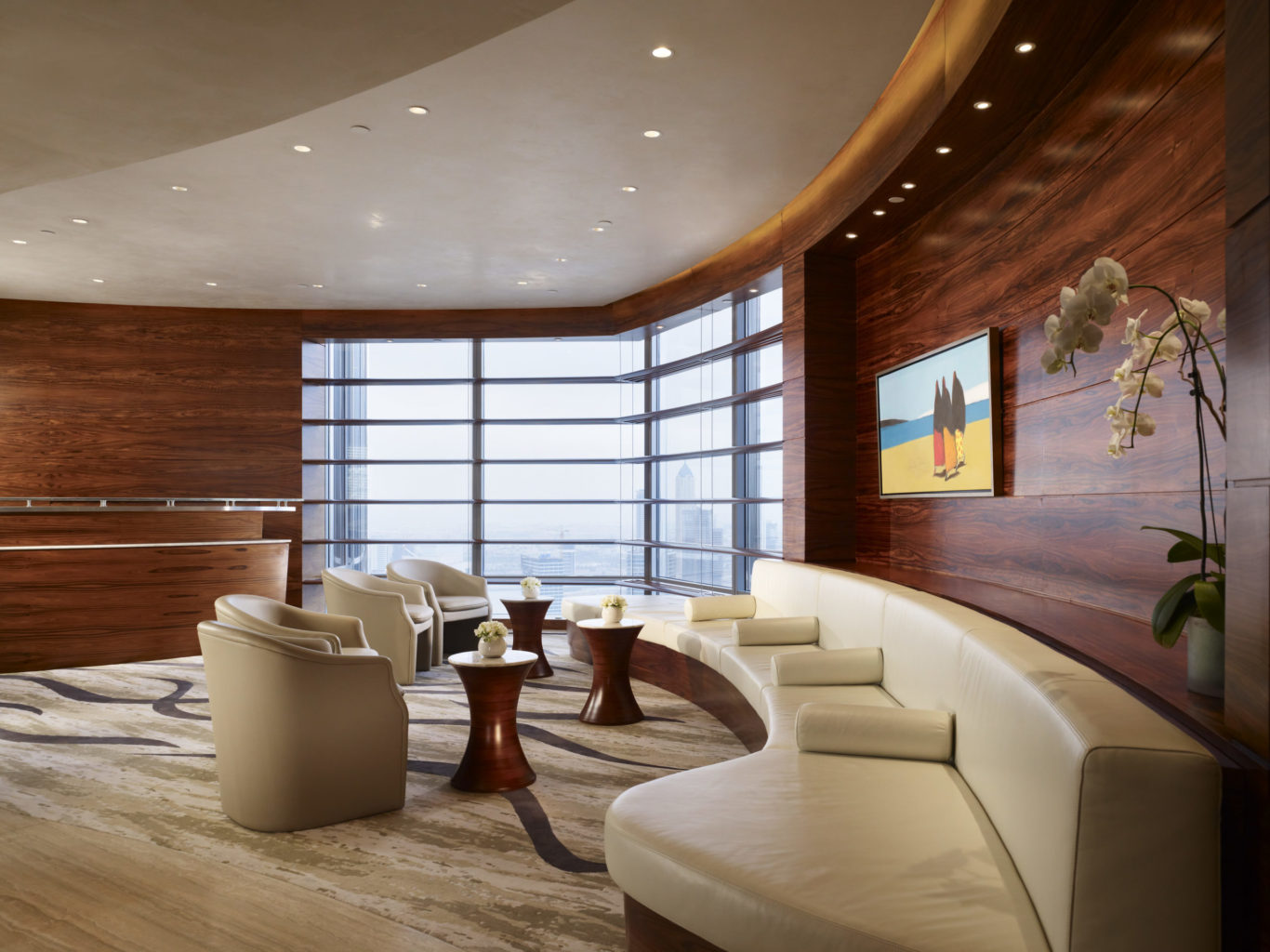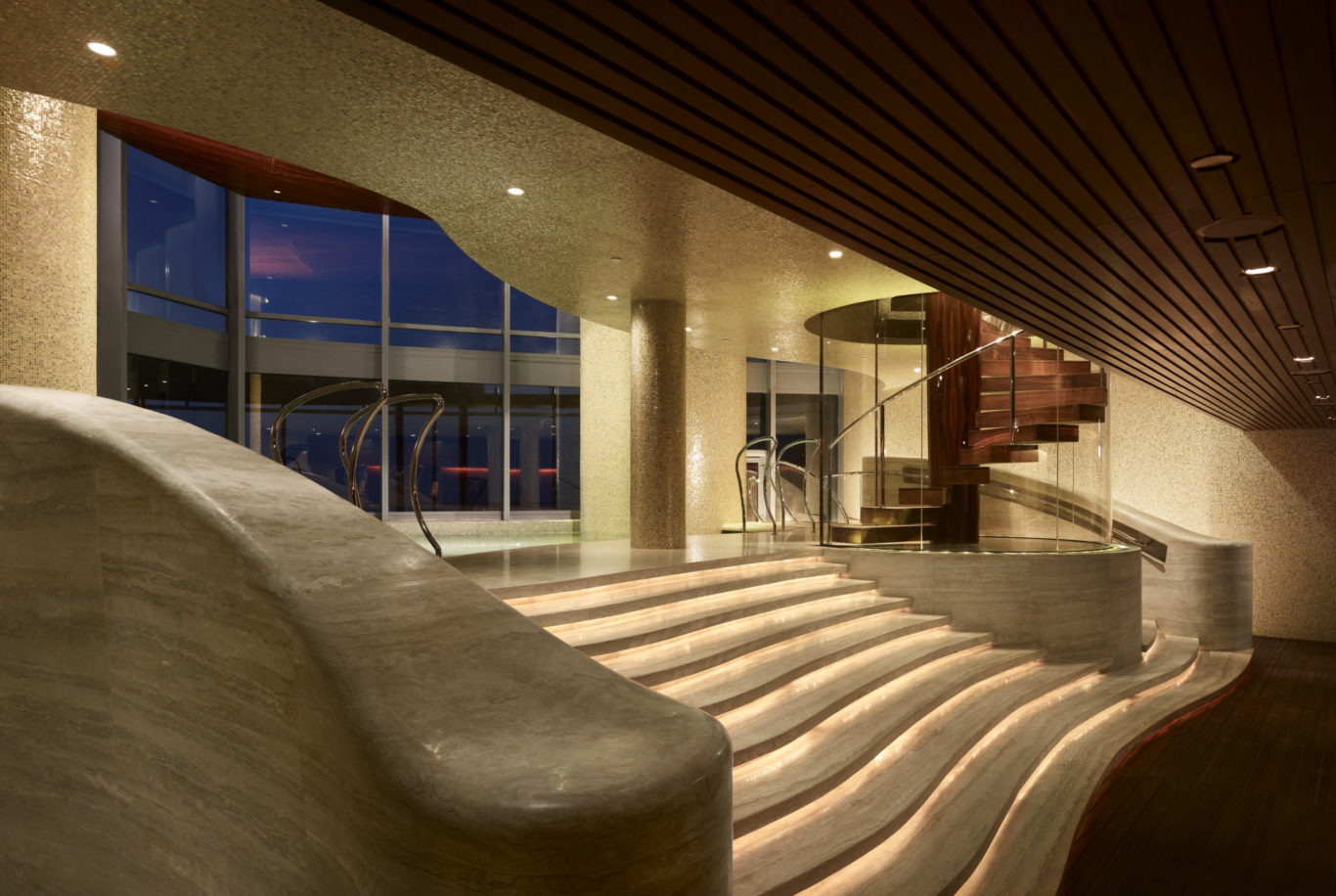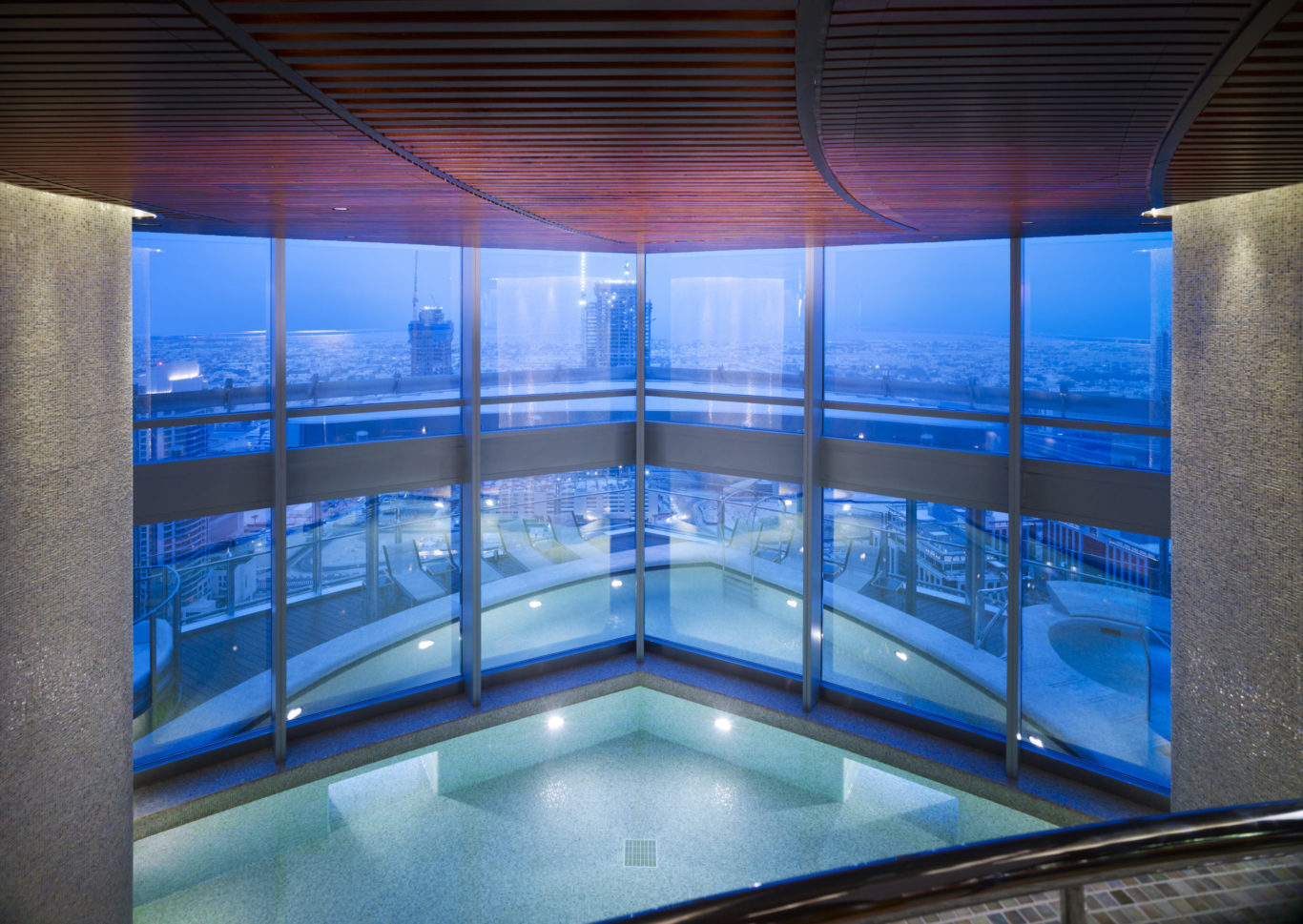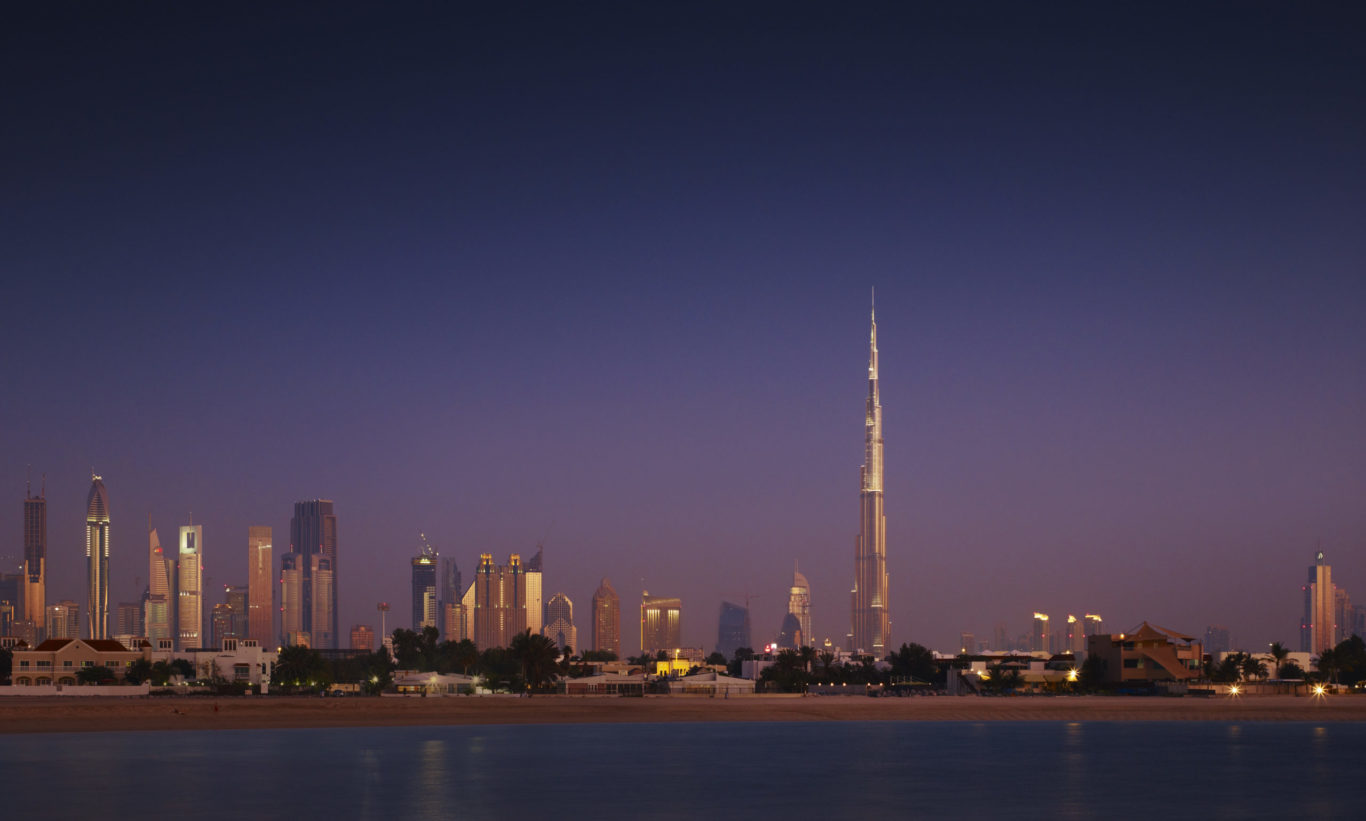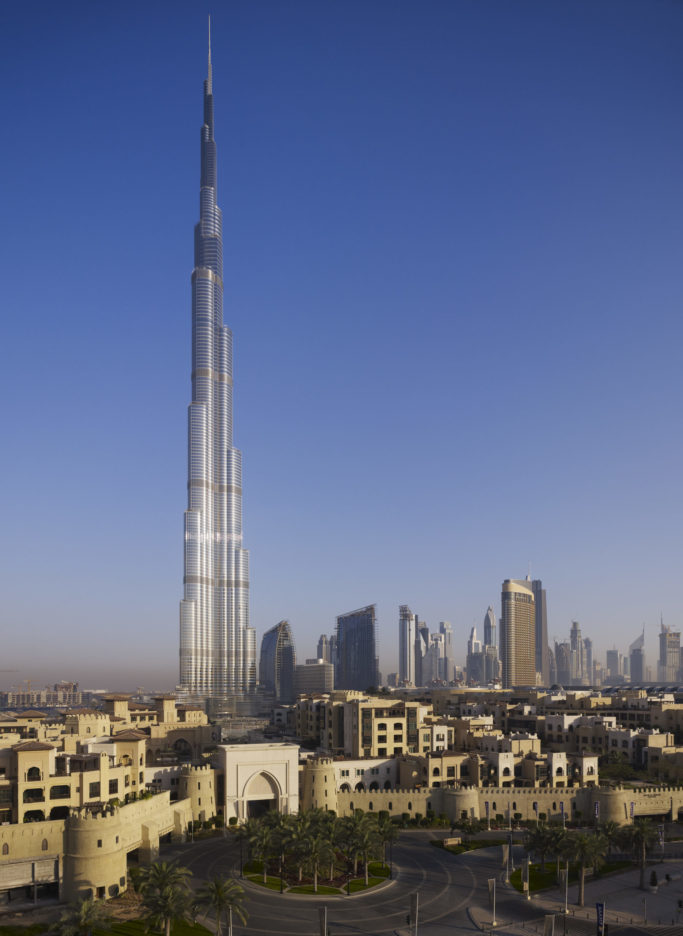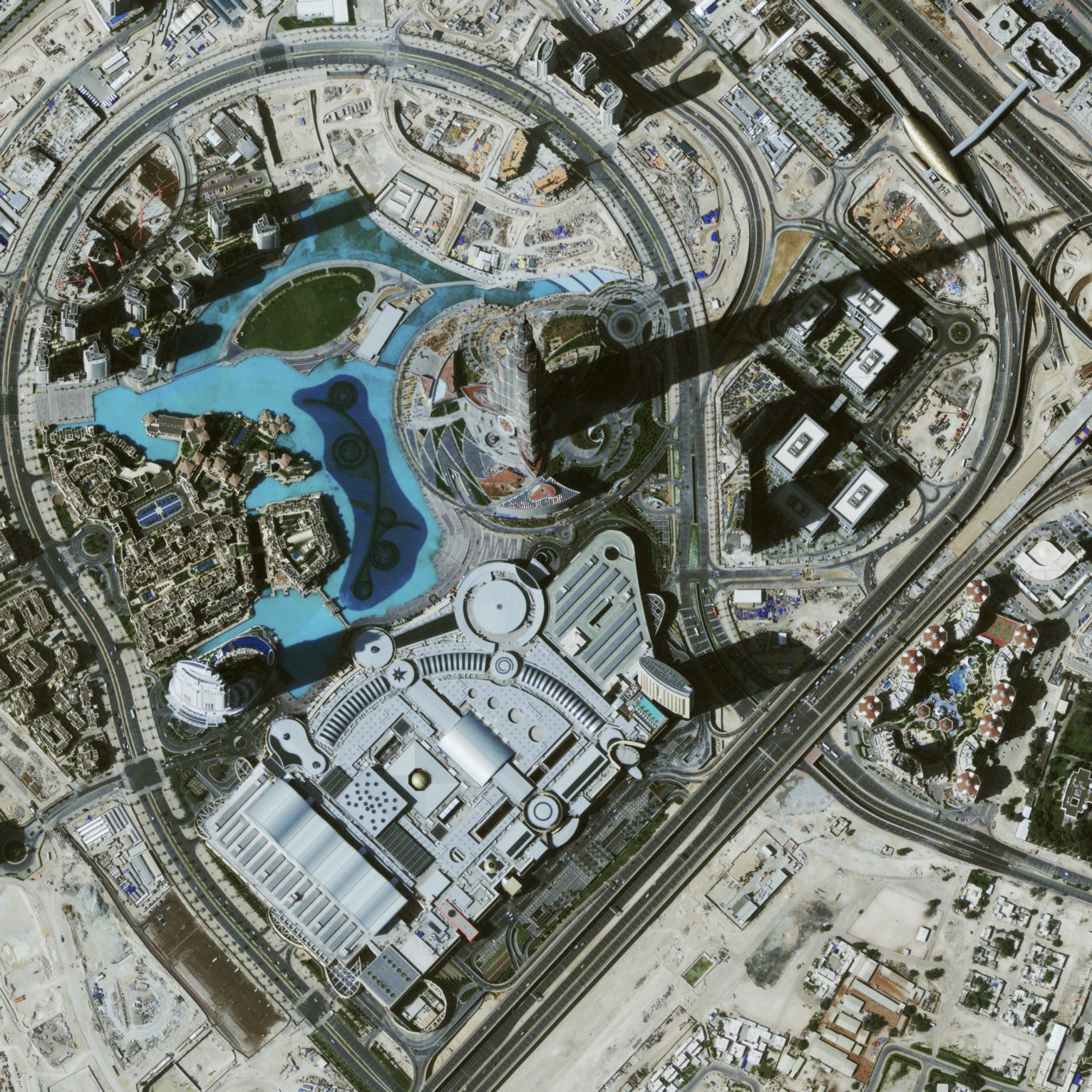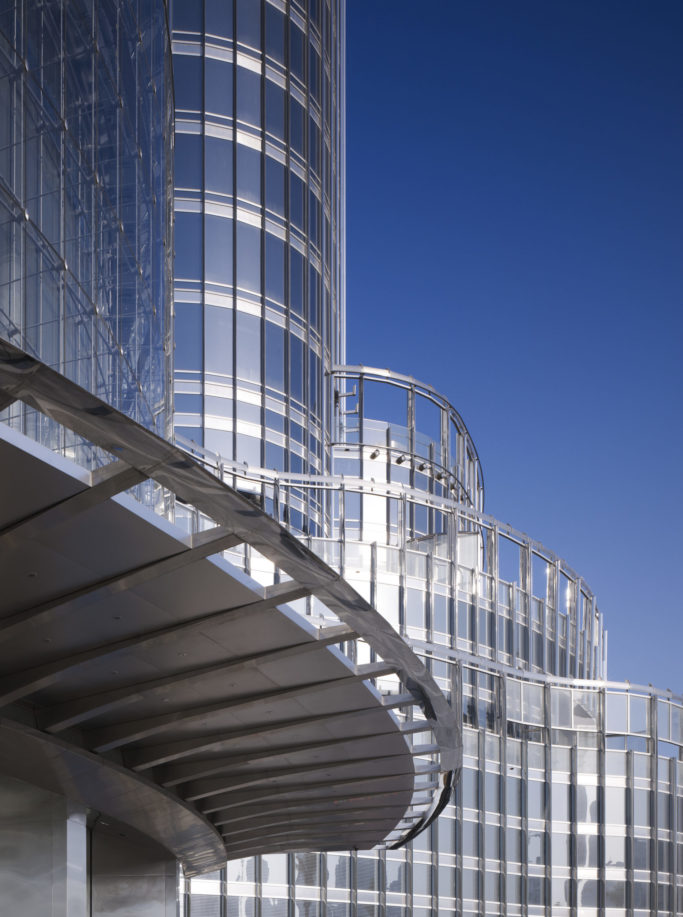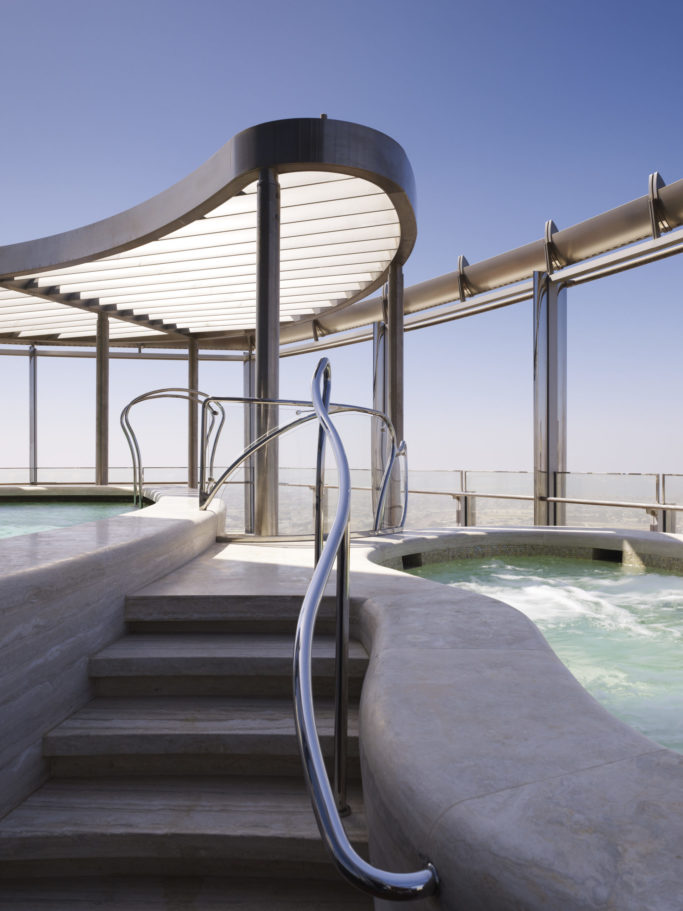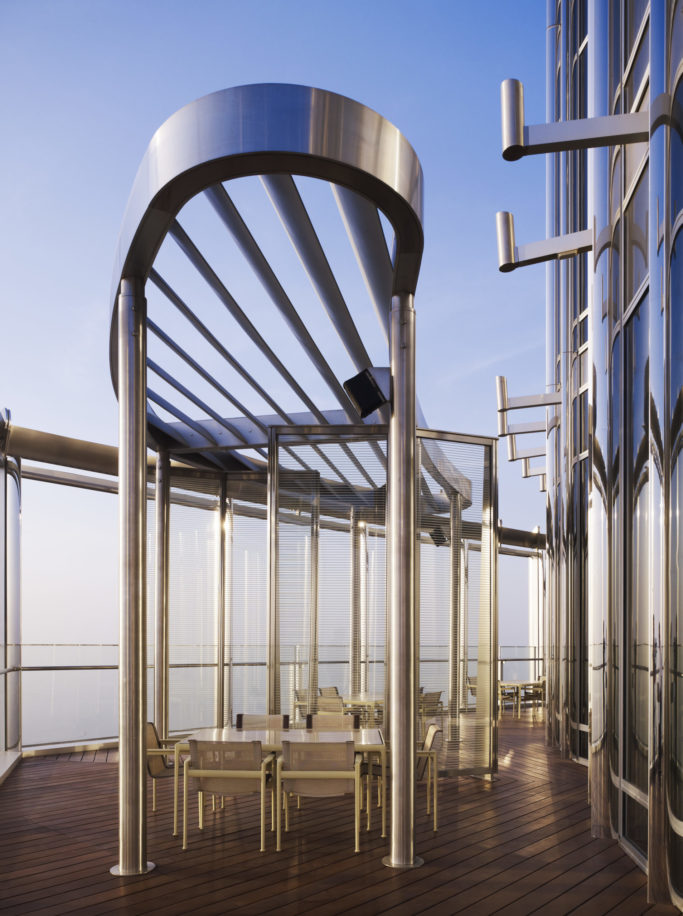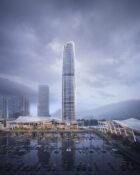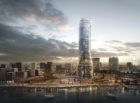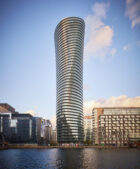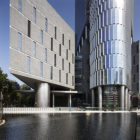Design inspired by the desert
The design for the Burj Khalifa combines local cultural influences with cutting-edge technology to achieve high performance in an extreme desert climate. As the centerpiece of a mixed-use development, the 162-story tower contains offices, retail space, residential units, and an Armani Hotel. The Y-shaped floor plan maximizes views of the Arabian Gulf. At ground level, the skyscraper is surrounded by green space, water features, and pedestrian-friendly boulevards.
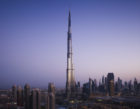
The design for the tower is inspired by the geometries of a regional desert flower and the patterning systems embodied in Islamic architecture. Built of reinforced concrete and clad in glass, the tower is composed of sculpted volumes arranged around a central buttressed core. As it rises from a flat base, setbacks occur in an upward spiraling pattern, which reduces the building’s mass as it reaches skyward. At the pinnacle, the central core emerges and is sculpted to form a spire.

